
Uinta County is a county in the U.S. state of Wyoming. As of the 2020 United States Census, the population was 20,450. Its county seat is Evanston. Its south and west boundary lines abut the Utah state line.

Uinta National Forest is a national forest located in north central Utah, US. It was originally part of the Uinta Forest Reserve, created by President Grover Cleveland on 2 February 1897. The name is derived from the Ute word Yoov-we-teuh which means pine forest. Because of changes to the boundaries over the years, the Uinta Mountains are now located in the Wasatch-Cache National Forest. In August 2007 it was announced that the Uinta National Forest would merge with the Wasatch–Cache National Forest based in Salt Lake City, Utah, 50 miles (80 km) north of Provo, Utah.

Wasatch–Cache National Forest is a United States National Forest located primarily in northern Utah (81.23%), with smaller parts extending into southeastern Idaho (16.42%) and southwestern Wyoming (2.35%). The name is derived from the Ute word Wasatch for a low place in high mountains, and the French word Cache meaning to hide. The term cache originally referred to fur trappers, the first Europeans to visit the land. The Wasatch–Cache National Forest boundaries include 1,607,177 acres (6,504.01 km2) of land.
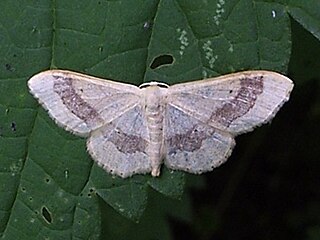
Idaea, sometimes called Hyriogona, is a large genus of geometer moths. It was erected by Georg Friedrich Treitschke in 1825. They are found nearly worldwide, with many native to the Mediterranean, the African savannas, and the deserts of western Asia.

The Uinta ground squirrel, commonly called a "chisler" and Potgut in northern Utah, is a species of rodent native to the western United States.

Though small in absolute diversity of genera, the Hemitheini are nonetheless the largest tribes of geometer moths in the subfamily Geometrinae. Like most Geometrinae, they are small greenish "emerald moths". The tribe was first described by Charles Théophile Bruand d'Uzelle in 1846.

This is a list of the National Register of Historic Places listings in Uinta County, Wyoming.

Aethaloida is a monotypic moth genus in the family Geometridae erected by James Halliday McDunnough in 1920. Its only species, Aethaloida packardaria, was first described by George Duryea Hulst in 1888. It is found in the US state of California.
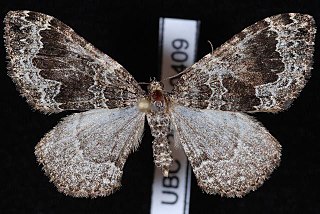
Antepirrhoe is a genus of moths in the family Geometridae described by Warren in 1905.

Perizoma is a genus in the geometer moth family (Geometridae). It is the type genus of tribe Perizomini in subfamily Larentiinae. The tribe is considered monotypic by those who include the genera Gagitodes, Martania and Mesotype in Perizoma. Some other less closely related species formerly placed here are now elsewhere in the Larentiinae, e.g. in Entephria of the tribe Larentiini.

George Duryea Hulst was an American clergyman, botanist and entomologist.

Trichopterygini is a tribe of geometer moths under subfamily Larentiinae. The tribe was described by Warren in 1894.
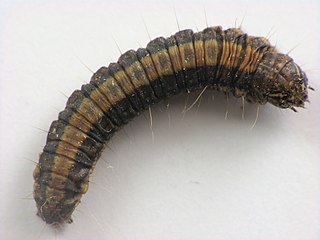
The Epipaschiinae are a subfamily of snout moths. More than 720 species are known today, which are found mainly in the tropics and subtropics. Some occur in temperate regions, but the subfamily is apparently completely absent from Europe, at least as native species. A few Epipaschiinae are crop pests that may occasionally become economically significant.

Homoeosoma is a genus of moths of the family Pyralidae.
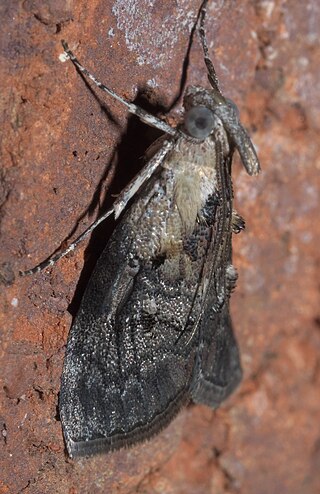
Pococera is a genus of snout moths in the subfamily Epipaschiinae, found mainly in North and Central America. It was described by Philipp Christoph Zeller in 1848.
Bandera cupidinella is a species of snout moth in the genus Bandera. It was described by George Duryea Hulst in 1888, and is known from the United States, including Colorado and New Mexico.

The Anerastiini are a tribe of moths of the family Pyralidae.

Sciota is a genus of snout moths. It was described by George Duryea Hulst in 1888.

Zophodia is a genus of snout moths in the subfamily Phycitinae. It was erected by Jacob Hübner in 1825.
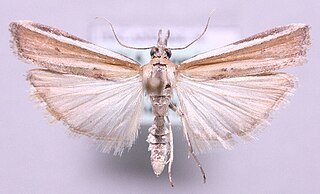
Pima is a genus of snout moths described by George Duryea Hulst in 1888.
















